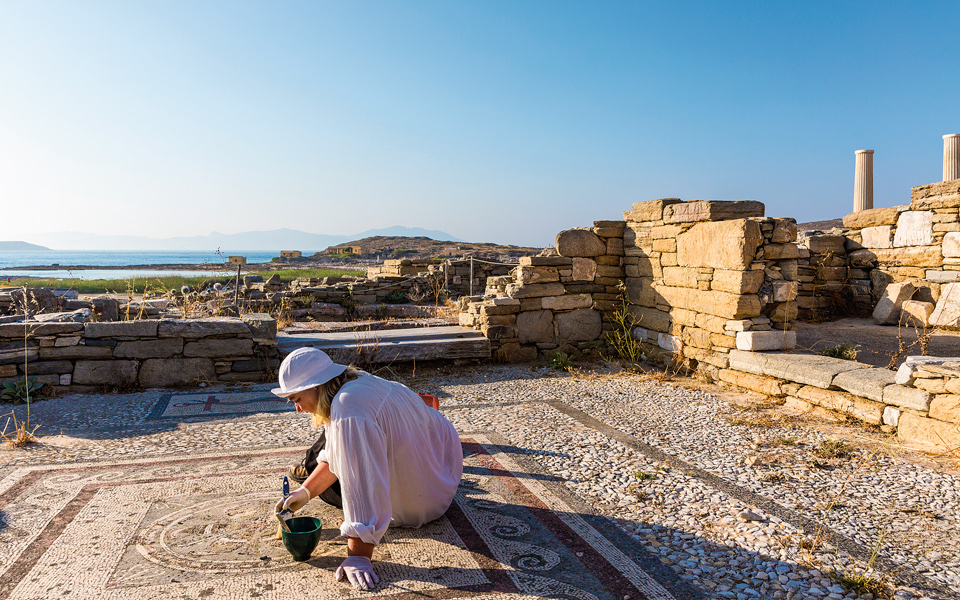When the day’s visitors have left Delos, the “residents” remain; men and women who have dedicated their lives to protecting, preserving and showcasing one of the most impressive archaeological sites in Greece. They include day and night guards, archaeologists, conservators of mosaics, wall paintings and ceramics, craftsmen, architects, land surveyors and cleaners, all employees of the Ministry of Culture. In summer, the team is reinforced with seasonal personnel and augmented by Greek and foreign researchers – French, German and American – who together form a small, multinational village.
All of them live an austere life in small dwellings without any amenities or luxuries. Winters are particularly difficult. The team shrinks, the boat connections become less frequent and the opportunities to resupply dwindle. If someone falls ill, he or she must be taken to Mykonos.
The biggest challenge for the “self-exiled”, as they call themselves, isn’t enduring the difficult working conditions under the blazing sun, or even their loneliness and yearning for home; it’s the enormous responsibility they bear for the protection of this UNESCO World Heritage Site.
A daily battle is waged to ensure that the “open-air museum” of Delos remains standing and safe. The most important work focuses on protecting the monuments against the effects of strong winds, the sea air and the enroachment of vegetation. This may involve removing weeds from the mosaic floors or using a laser-scanning drone for 3D surveying of the monuments, so that every detail can be electronically examined.
No matter how carefully and skillfully the work is carried out, time is never kind to the monuments. The most important finds are given a safe haven in the Archaeological Museum of Delos, which houses the original large lion statues and significant mosaics. The Ministry of Culture is now planning to modernize and expand the museum so that it can house a greater number of artifacts, and to give it more facilities for storing, documenting and conserving antiquities. At present, there are many items waiting to be moved into the museum, including sculptures and the most important of the 3,000 inscriptions found to date.
*Special thanks to Zoi Papadopoulou, the Head of the Department of Prehistorical and Classical Antiquities at the Ephorate of the Cyclades.
“No matter how carefully and skillfully the work is carried out, time is never kind to the monuments. ”











